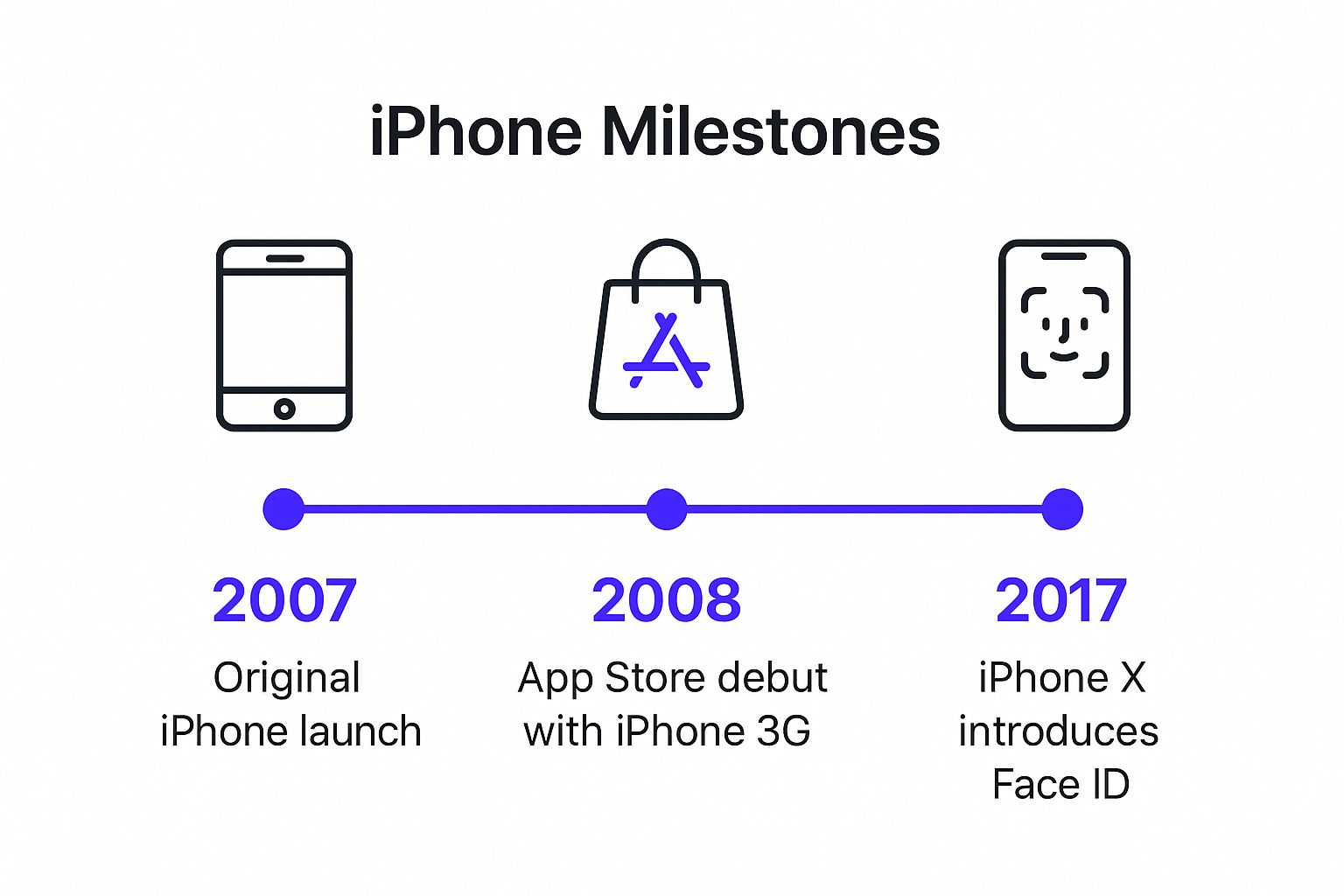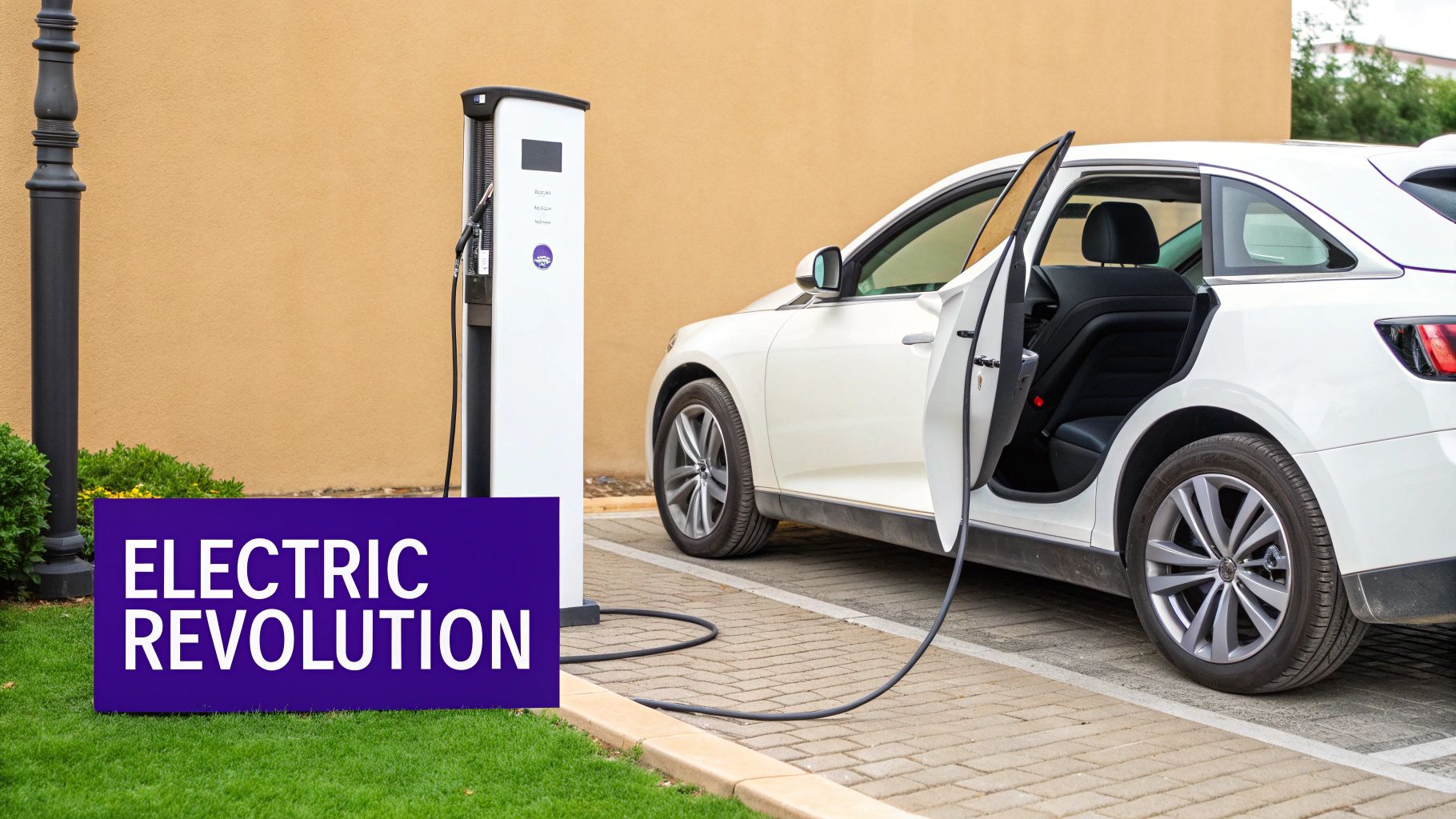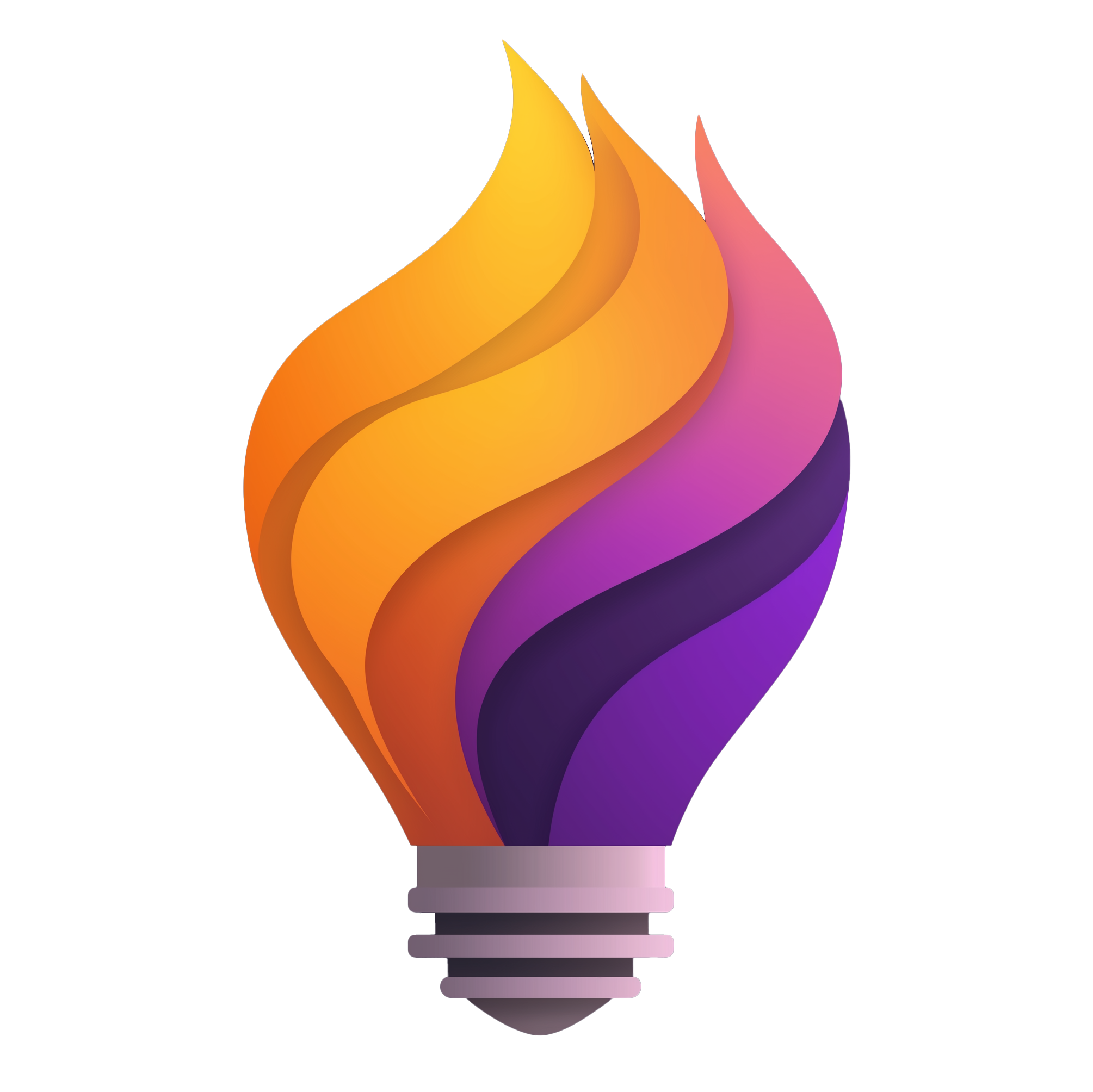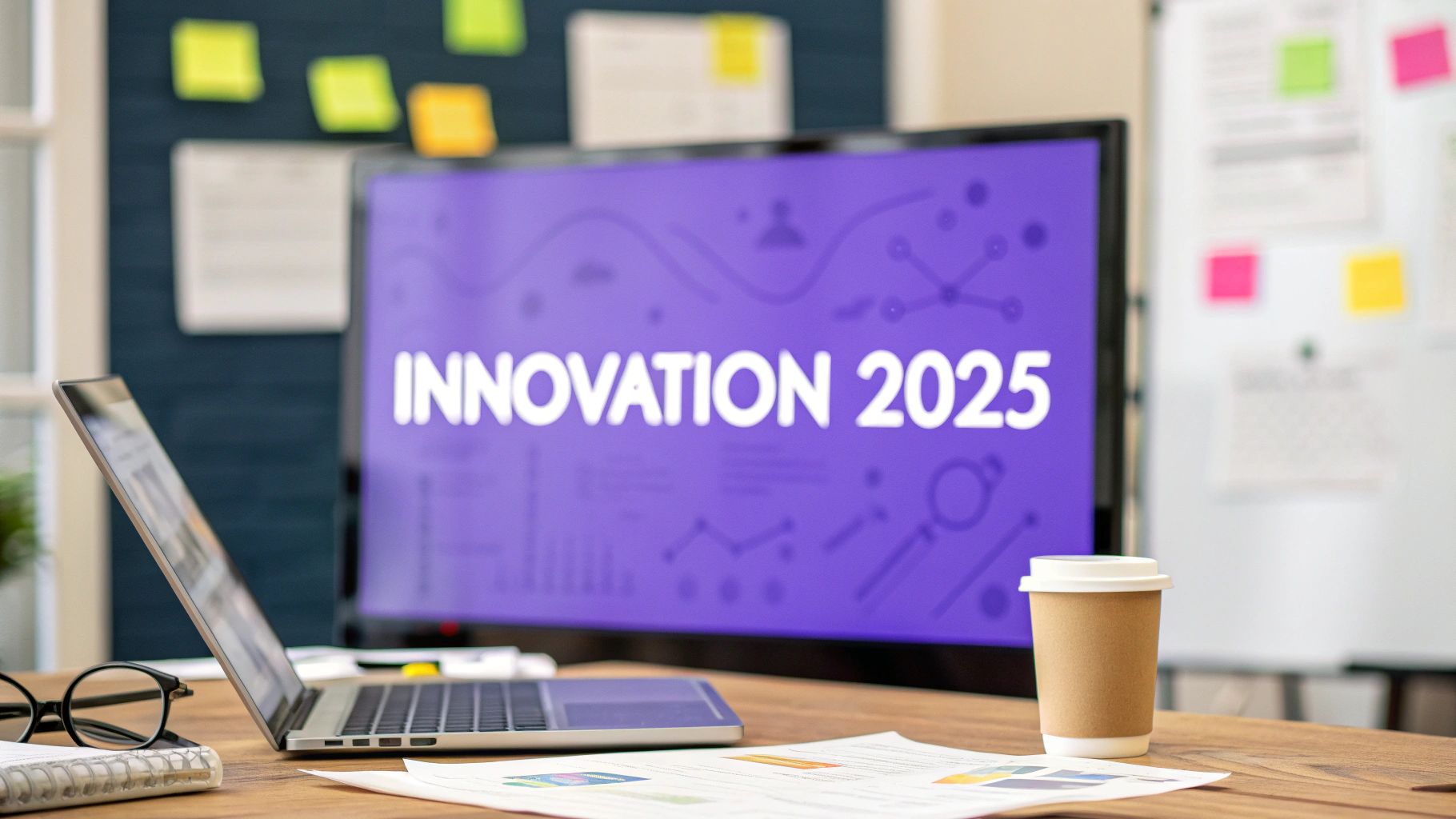True product innovation isn't a random spark of genius; it's a structured process for solving deep-seated customer problems in novel ways. From the iPhone reshaping communication to Dyson re-engineering a simple household appliance, the most impactful products emerge from a disciplined approach to creativity. For today's remote and hybrid teams, the challenge is fostering this same innovative spirit across distances.
How can you turn scattered ideas into a cohesive, market-disrupting product when your team is distributed? The key lies in structured brainstorming frameworks that guide teams from problem identification to validated solutions. Some teams even use alternative funding and validation routes to bring their ideas to life. Understanding the intricate steps involved is crucial, and you can delve deeper into the crowdfunding product development process for practical insights.
In this article, we'll dissect eight iconic examples of product innovation, revealing the strategic thinking and tactical steps behind their success. We won't just tell you what they did; we'll show you how they did it. You will learn replicable strategies to help your team transform abstract concepts into tangible breakthroughs, even when working apart.
1. iPhone – Revolutionary Smartphone
The launch of the iPhone in 2007 is a landmark event in product innovation. Apple didn't just create a new phone; it completely redefined the category by merging three products into one: a mobile phone, a widescreen iPod with touch controls, and an internet communicator. This integration, powered by a revolutionary multi-touch interface, transformed the smartphone from a niche business tool into an essential device for everyone.
The iPhone’s success stems from a core principle: simplifying complex technology for the end-user. By prioritizing the user experience and industrial design, Apple created a product that was not only powerful but also intuitive and desirable. This focus on human-centered design set a new standard for the entire tech industry.
Strategic Analysis
Apple's strategy went far beyond the physical device. They meticulously built an ecosystem around the iPhone, which proved to be one of the most powerful examples of product innovation.
- Platform Creation: The introduction of the App Store with the iPhone 3G in 2008 was a masterstroke. It transformed the iPhone from a closed device into an open platform, inviting third-party developers to create applications and add immense value for users.
- Continuous Iteration: Apple consistently introduces meaningful updates. The iPhone 4 brought the high-resolution Retina display, while the iPhone X introduced Face ID and an edge-to-edge screen, demonstrating a commitment to pushing technological boundaries while maintaining a familiar core experience.
This timeline illustrates key moments that shifted the iPhone from a product to a platform.

The visualization shows that Apple's innovation was not a single event but a strategic sequence of building a device, creating a platform, and then redefining the user interface.
Actionable Takeaways for Your Team
For remote and hybrid teams, the iPhone’s journey offers clear lessons:
- Focus on the Core Problem: Identify a complex user problem and brainstorm how to radically simplify the solution.
- Build an Ecosystem, Not Just a Feature: Think beyond your core product. How can you create a platform that allows others to build upon your innovation?
- Prioritize User Experience: Invest heavily in design and usability. An intuitive interface can be your most significant competitive advantage, especially when users interact with your product digitally.
2. Tesla Electric Vehicles – Redefining the Automobile
Tesla's entry into the automotive industry is a powerful case study in disruptive product innovation. Instead of creating just another electric car, Tesla fundamentally reimagined what a car could be. By treating the vehicle as a software-centric technology platform, Tesla proved that electric vehicles could outperform, out-tech, and be more desirable than their gasoline-powered counterparts.

Tesla's success is rooted in its first-principles approach: challenging every core assumption of the automotive industry. From its direct-to-consumer sales model to its Supercharger network and over-the-air software updates, the company re-engineered the entire ownership experience. This holistic vision transformed the car from a static piece of hardware into an ever-evolving device.
Strategic Analysis
Tesla’s strategy was not just to build an electric car, but to create a self-sustaining ecosystem that would accelerate the world’s transition to sustainable energy. This ambitious goal is one of the most compelling examples of product innovation in the modern era.
- Vertical Integration: By controlling manufacturing, software development, and its charging infrastructure, Tesla maintains tight control over the user experience and the pace of innovation. This allows for rapid iteration and quality assurance that competitors find hard to match.
- Software as a Differentiator: Over-the-air (OTA) updates are a game-changer. Tesla vehicles improve over time with new features, performance boosts, and bug fixes, completely upending the traditional automotive lifecycle of gradual hardware depreciation.
This strategic approach demonstrates a clear understanding of the steps in the innovation process by identifying a market need and systematically building a solution.
Actionable Takeaways for Your Team
For remote teams looking to disrupt an established market, Tesla’s journey provides a clear blueprint:
- Challenge Industry Norms: Ask your team what "unbreakable" rules of your industry could be broken. Don't just improve a product; question the entire business model around it.
- Treat Your Product as a Platform: Consider how your product can evolve after the sale. Can you add value through software updates or new services, creating an ongoing relationship with the customer?
- Build the Necessary Infrastructure: Identify the dependencies for your product's success. If the required infrastructure doesn't exist, consider building it yourself to remove adoption barriers for your users.
3. Dyson Bagless Vacuum Cleaner
The launch of the Dyson DC01 in 1993 was a disruptive moment in the household appliance market. James Dyson didn't just improve the vacuum cleaner; he re-engineered its core function. He used cyclonic separation technology to solve a universal consumer frustration: vacuums that lose suction as their bags fill with dust. This innovation turned a mundane chore into an efficient, satisfying experience.
Dyson's success is a testament to relentless problem-solving and a core belief in engineering excellence as a brand differentiator. After 5,127 prototypes, he created a product that not only performed better but also looked radically different. The transparent bin and visible cyclones weren't just functional; they were a powerful marketing tool that communicated the technology's superiority at a glance.
Strategic Analysis
Dyson's strategy was built on perseverance and a deep understanding of user pain points. He transformed the vacuum from a low-interest utility item into a high-performance, desirable piece of technology, providing a powerful example of product innovation.
- Problem-Led Innovation: The entire company was founded to solve a single, tangible problem: declining suction. This singular focus guided every design and engineering decision, ensuring the final product delivered a clear and compelling benefit.
- Creating a New Market Tier: Dyson refused to compete on price. Instead, he created a premium category by emphasizing superior technology, distinctive design, and engineering prowess. This strategy allowed him to command higher prices and build a brand associated with quality and innovation.
- Iterative Technology Expansion: From the first DC01 to the portable V-series cordless vacuums and the 360 Eye robotic cleaner, Dyson has consistently expanded its core technology into new formats. This continuous evolution keeps the brand at the forefront of the market.
This timeline shows how Dyson turned a persistent engineering challenge into a global brand.
Actionable Takeaways for Your Team
Dyson’s journey offers critical lessons for teams aiming to disrupt established markets:
- Obsess Over the User's Problem: Dedicate brainstorming sessions to deconstructing a common user frustration. Don't stop at the surface; dig into the root cause of the annoyance.
- Make Your Innovation Visible: If your product has unique internal technology, find a way to showcase it in the design. This builds user trust and makes your competitive advantage immediately obvious.
- Invest in Prototyping: Don't fear failure. Embrace a culture of rapid and extensive prototyping. Each failed attempt provides valuable data that moves you closer to a breakthrough solution.
4. Spotify Music Streaming Service
Spotify's launch in 2008 introduced a monumental shift in how the world consumes music. It didn't just create another music player; it pioneered a sustainable streaming model that tackled the rampant issue of digital piracy head-on. By providing legal, on-demand access to a vast catalog of music, Spotify transformed the industry's business model from ownership (CDs, downloads) to access.
The core of Spotify's success lies in its freemium model and hyper-personalization. This dual approach created an accessible entry point for millions of users while building a powerful engine for discovery. By making music discovery seamless and personal, Spotify became an indispensable part of daily life for its users.
Strategic Analysis
Spotify’s strategy was not just about streaming music but about creating a new kind of music ecosystem built on data, accessibility, and community. This is a powerful example of product innovation that changed user behavior on a global scale.
- Freemium as a Conversion Funnel: The ad-supported free tier was a brilliant strategic move. It onboarded users who were accustomed to getting music for free (via piracy) and gradually demonstrated the value of an upgrade to the ad-free, offline-capable Premium subscription.
- Data-Driven Personalization: Spotify invested heavily in machine learning to power its recommendation algorithms. Features like Discover Weekly and the annual viral sensation, Spotify Wrapped, create deeply personal and shareable experiences that drive user engagement and loyalty.
- Platform Expansion: Recognizing the limits of music licensing margins, Spotify strategically expanded into podcasts. By securing exclusive content like "The Joe Rogan Experience," it diversified its offering, increased user time-on-platform, and created new revenue streams.
This multi-pronged approach illustrates a clear strategy: capture the market, personalize the experience, and then expand the platform's value. These steps are a cornerstone of many modern product discovery techniques. Learn more about product discovery on remotesparks.com.
Actionable Takeaways for Your Team
For product teams, especially those in remote and hybrid settings, Spotify's journey provides a blueprint for market disruption:
- Solve a Broken User Experience: Spotify identified the dual problems of piracy for the industry and inconvenient access for users. Focus your brainstorming on finding elegant solutions to widespread, frustrating problems.
- Use Data to Create Magic: Invest in understanding user behavior and use that data to create personalized, almost magical experiences. This turns a functional product into an emotionally resonant one.
- Build a Habit, Not Just a Feature: Design your product to integrate into a user's daily routine. Spotify became the default for commutes, workouts, and focus time, making it incredibly difficult to replace.
5. Nest Learning Thermostat – Intelligent Home Automation
The Nest Learning Thermostat, launched in 2011, is a prime example of product innovation that turned a forgotten household utility into a desirable smart device. Co-founders Tony Fadell and Matt Rogers, both Apple alumni, applied consumer tech principles to a mundane product, creating an intelligent thermostat that learns user behavior to optimize home energy consumption. It proved that even the most overlooked items could be reimagined through thoughtful design and smart technology.
Nest's success was rooted in a simple but powerful idea: make a complex, invisible process (energy management) simple and visible. By combining machine learning, sleek industrial design, and a user-friendly interface, Nest transformed the thermostat from a beige box on the wall into an engaging, data-driven hub for the home, making energy savings tangible and even beautiful.
Strategic Analysis
Nest's strategy was not just about building a better thermostat; it was about creating an entirely new category in the smart home market. They meticulously executed this by focusing on design, intelligence, and ecosystem integration.
- Elevating Mundane Design: Nest applied an Apple-like focus on premium materials and an intuitive user interface (the click-and-spin dial). This made a typically low-interest product something consumers were proud to display in their homes.
- Demonstrating Value Through Data: The device didn't just save energy; it showed you it was working. The "Nest Leaf" icon appeared when you chose an energy-saving temperature, and monthly reports detailed usage, providing clear evidence of its financial return. This transparency built trust and justified the premium price.
This approach shows how making the benefit of a product visible is a powerful innovation tactic. It moved the thermostat from a "set it and forget it" tool to an interactive part of the home.
Actionable Takeaways for Your Team
For teams looking to innovate in established markets, Nest’s journey offers several key lessons:
- Reimagine an "Unsexy" Product: Look for overlooked, boring, or complicated products in your industry. Brainstorm how you can apply modern design, user experience, and data to create a vastly superior solution.
- Make the Invisible, Visible: If your product delivers value behind the scenes (like saving money or time), find creative ways to visualize that value for the user. Dashboards, reports, and simple visual cues can make benefits feel real.
- Design for Simplicity: From unboxing to installation and daily use, focus on making the entire experience effortless. A simple DIY setup was critical for Nest's widespread adoption and is a key lesson for any product team.
6. Airbnb Home-Sharing Platform
Airbnb's launch in 2008 wasn't just about renting rooms; it was a fundamental innovation in the hospitality industry. By creating a trusted peer-to-peer marketplace, Airbnb unlocked a vast, dormant supply of accommodation, connecting travelers directly with local hosts. This model transformed spare rooms and empty homes into viable, revenue-generating assets.
The core of Airbnb’s success is built on facilitating trust between strangers. The platform did not invent home-sharing, but it scaled the concept globally by solving the critical challenges of trust and safety. Through verified profiles, a secure payment system, and a two-way review system, Airbnb created a new category of travel centered on authentic, local experiences.
Strategic Analysis
Airbnb’s strategy demonstrates a masterclass in building a two-sided marketplace, a powerful form of product innovation. Their approach meticulously addressed the needs of both hosts and guests to create a self-reinforcing ecosystem.
- Solving a Hyper-Specific Problem: The founders famously started by renting air mattresses on their floor during a sold-out design conference in San Francisco. This initial niche focus allowed them to validate the concept before scaling.
- Building the 'Supply' Side: In the early days, they famously went door-to-door in New York, taking professional photos of listings to make them more appealing to travelers. This hands-on approach built the initial quality supply needed to attract guests.
- Creating a Community: The introduction of Airbnb Experiences shifted the platform beyond just accommodation. It allowed hosts to offer tours, classes, and activities, deepening the connection between travelers and the local community, and creating new revenue streams.
This sequenced approach, from solving a niche problem to building a global community, is a key reason for their disruptive success. Learn more about the innovation process behind Airbnb's platform on remotesparks.com.
Actionable Takeaways for Your Team
For teams, especially those building marketplaces or community-driven products, Airbnb's journey provides a clear blueprint:
- Solve the "Chicken and Egg" Problem Manually: Don't be afraid to do things that don't scale at first. Manually recruiting and onboarding one side of your marketplace (like Airbnb did with hosts) is often necessary to attract the other.
- Engineer Trust into Your Product: If your product relies on peer-to-peer interactions, make trust mechanisms like reviews, verified IDs, and secure messaging central to the user experience.
- Think Beyond the Core Transaction: Look for opportunities to expand your value proposition. How can you help your users build deeper connections and create a community around your platform?
7. Amazon Kindle E-Reader
Amazon's launch of the Kindle in 2007 was a masterclass in creating a new product category by digitizing a deeply ingrained analog experience. The Kindle wasn't just another gadget; it was a purpose-built portal to a vast library, designed to make books more accessible. By combining E Ink technology that mimicked real paper with seamless wireless connectivity for instant downloads, Amazon successfully transitioned reading into the digital age.
The Kindle's success is rooted in its dedicated focus: it enhances the core experience of reading without trying to be a multi-purpose tablet. This single-minded design principle, championed by CEO Jeff Bezos, created a distraction-free device that honored the tradition of book consumption while leveraging the power of digital distribution.
Strategic Analysis
Amazon’s strategy for the Kindle was a brilliant example of building an end-to-end ecosystem. The device itself was just one piece of a much larger puzzle, making it a powerful example of product innovation.
- Frictionless Content Delivery: The original Kindle's "Whispernet" allowed users to download books in under 60 seconds without a computer. This one-click, instant gratification model removed the primary barrier to digital adoption and locked users into Amazon's bookstore.
- Replicating the Analog: The use of E Ink technology was crucial. It reduced eye strain and mimicked the appearance of printed paper, making the transition from physical books feel natural and comfortable for even the most traditional readers.
- Platform Democratization: With Kindle Direct Publishing (KDP), Amazon empowered authors to self-publish and reach a global audience, radically disrupting the traditional publishing industry and exponentially growing the content available on the platform.
Actionable Takeaways for Your Team
For teams engaged in remote product development, the Kindle's story provides key insights:
- Solve for a Single, Focused Purpose: Resist the urge to add features that dilute the core user experience. A product that does one thing exceptionally well is often more powerful than one that does many things poorly.
- Build a Seamless Ecosystem: Consider the entire user journey, from discovery to purchase to consumption. How can you remove friction at every step to create an integrated and compelling experience?
- Use Technology to Enhance, Not Replace: Identify the beloved aspects of an analog experience and use technology to improve upon them, not erase them. This approach lowers the barrier to entry for new users.
8. GoPro – Democratizing Action Capture
GoPro didn't invent the camera, but it pioneered an entirely new category: the rugged, mountable action camera. Founder Nick Woodman’s vision was born from a desire to capture professional-quality photos of himself surfing. This led to a product that enabled users to become the stars of their own adventures, shifting them from passive observers to active creators of dynamic, first-person content.

The core innovation was not just the hardware, it was the empowerment of the user. By making a durable, high-quality camera accessible and easy to use in extreme conditions, GoPro created a tool that fueled the rise of user-generated content on platforms like YouTube. This turned customers into the company's most powerful marketing engine.
Strategic Analysis
GoPro’s strategy masterfully intertwined product development with community building, creating a powerful, self-reinforcing growth loop. This is a prime example of product innovation that creates a new market.
- Ecosystem Building: Beyond the camera itself, GoPro developed an extensive ecosystem of mounts, accessories, and software. This allowed users to capture footage from virtually any perspective, locking them into the GoPro platform and expanding the creative possibilities.
- User-Generated Marketing: GoPro encouraged users to share their most exciting moments, creating an authentic and highly effective marketing channel. Initiatives like the GoPro Awards incentivized content creation, effectively crowdsourcing advertising that showcased the product's capabilities in the most compelling way possible.
The famous Red Bull Stratos jump, captured with GoPro cameras, cemented the brand's association with peak human achievement and extreme sports.
This video demonstrates how GoPro became synonymous with capturing incredible, once-in-a-lifetime moments, a key part of its brand identity.
Actionable Takeaways for Your Team
For teams looking to innovate, GoPro's journey offers powerful lessons in market creation and community engagement:
- Enable New Behaviors: Instead of just improving an existing product, ask how you can create a tool that allows your users to do something entirely new.
- Turn Customers into Advocates: Build your product in a way that encourages sharing. Create platforms or incentives that transform your user base into a powerful marketing force. This approach requires a creative problem-solving process to identify unique ways to engage your community.
- Solve a Niche Problem First: GoPro started by focusing on a specific need for surfers. By dominating a niche, they built the foundation to expand into a global phenomenon.
Product Innovation Comparison of 8 Examples
| Product/Innovation | Implementation Complexity 🔄 | Resource Requirements ⚡ | Expected Outcomes 📊 | Ideal Use Cases 💡 | Key Advantages ⭐ |
|---|---|---|---|---|---|
| iPhone – Revolutionary Smartphone | High: integrating hardware, software, ecosystem | High: R&D, design, software development, manufacturing | Market creation, new ecosystem, user experience transformation | Personal communication and multimedia | New smartphone category, intuitive UI, strong ecosystem |
| Tesla Electric Vehicles | Very high: advanced engineering and software | Very high: battery tech, manufacturing, infrastructure | Sustainable transport, performance, industry disruption | Personal/private and commercial electric transport | Long-range EVs, OTA updates, autopilot, zero emissions |
| Dyson Bagless Vacuum Cleaner | Moderate to high: patented tech and engineering | Moderate: prototyping, durable components | Consistent suction, premium home cleaning | Residential cleaning, allergy-sensitive households | Bagless design, constant suction, visible dirt collection |
| Spotify Music Streaming Service | Moderate: software platform and licensing | Moderate: infrastructure, licensing rights | Music access shift, piracy reduction, personalization | Digital music consumption and discovery | Huge catalog, freemium model, personalized recommendations |
| Nest Learning Thermostat | Moderate: hardware-software integration | Moderate: smart sensors, design, app development | Energy savings, smart home integration | Home HVAC control and energy efficiency | Learning algorithms, remote control, energy reports |
| Airbnb Home-Sharing Platform | Moderate-high: platform and trust system | Moderate: web/mobile development, support | Disrupted hospitality, expanded accommodation access | Peer-to-peer short-term rentals | Marketplace trust, local experiences, scalable platform |
| Amazon Kindle E-Reader | Moderate: hardware with ecosystem linkage | Moderate: hardware, content licensing | Digital reading shift, publisher disruption | Book readers, long-form content consumption | E Ink display, large content library, long battery life |
| GoPro Action Camera | Moderate-high: rugged hardware plus software | Moderate-high: manufacturing, accessory ecosystem | New media genre creation, first-person content capture | Extreme sports and adventure filming | Durable, mountable, high-quality video, user-created content |
Applying These Lessons to Your Next Breakthrough
The journey through these iconic examples of product innovation, from the iPhone's user-centric design to Airbnb's creation of a trust-based marketplace, reveals a powerful, unifying theme. Breakthroughs are not random sparks of genius; they are the result of a disciplined, empathetic, and structured process. Each success story we explored demonstrates a deep commitment to understanding and solving a genuine human problem.
The common thread is a relentless focus on the user. Dyson didn’t just build a better vacuum; he eliminated the recurring frustration of losing suction and buying bags. Spotify didn’t just digitize music; it created a seamless, personalized discovery engine that changed how we experience audio. This user-first mindset is the non-negotiable foundation of any meaningful innovation.
Turning Inspiration into Action for Your Team
For remote and hybrid teams, the challenge isn't a lack of talent but the difficulty of channeling collective creativity across distances. Simply looking at these examples isn't enough. The key is to replicate the process that led to their success: deep analysis, structured ideation, and rapid validation.
Here are the core principles to apply immediately:
- Systematize Your Empathy: Don’t just talk about users; embed their perspective into every stage. Use tools and frameworks that force your team to constantly ask, "What problem are we really solving for them?"
- Structure Your Creativity: Open-ended brainstorming often leads to generic ideas. Instead, use targeted ideation exercises that challenge assumptions and push your team to explore unconventional solutions, just as Tesla challenged the entire automotive supply chain.
- Embrace Cross-Functional Collaboration: Innovation happens at the intersection of diverse perspectives. The Nest Thermostat, for instance, was born from a fusion of hardware engineering, software design, and machine learning. Your process must deliberately bring together different skill sets and viewpoints.
Your Path to the Next Big Innovation
The path from an idea to a market-defining product is complex, but it is not a mystery. It requires a framework that transforms potential into tangible outcomes. By adopting a structured approach, you provide your remote team with the clarity and direction needed to build the next generation of innovative products. For those envisioning advanced features, integrating AI into new products can be significantly streamlined using resources that explain leveraging no-code AI backends, accelerating the path to innovation.
Ultimately, the lesson from these great examples of product innovation is that process fuels progress. By combining deep user empathy with a disciplined and structured creative methodology, your team can move beyond incremental improvements and start building true breakthroughs. The world is waiting for your solution.
Ready to transform your team's creative potential into tangible results? Bulby provides the structured brainstorming platform designed for remote and hybrid teams to run effective ideation sessions and uncover their next great product innovation. Start your journey from idea to impact today with Bulby.

